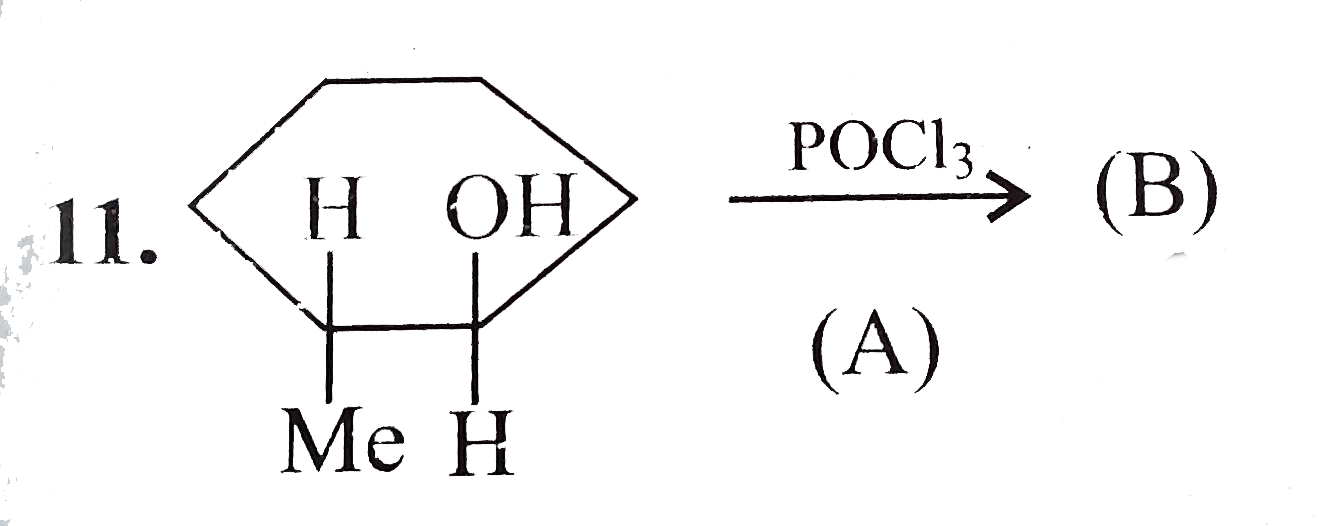
Which of the following statement(s) is/are correct?
A

B

C
c.The compound (A) on reaction with HI+RedP gives

D
d.The compound (A) on oxidation with MnO2 gives

Video Solution
Text Solution
The correct Answer is:B, C
During the elimination reaction, two eliminating group should be in anti-position, so less substituted alkene (Hofmann product) is formed.

So, statement (a) is wrong but (b) is correct.
c. HI+P reduces aldehyde to alkane, so the product is correct.
d. MnO2 oxidies selectively allylic or benzylic hydroxyl group. So (A) does not have any allylic or benzylic hydroxyl group. Hence, no reaction occurs. Thus, wrong product. So the answers are (b) and (c).
|
Updated on:21/07/2023
Topper's Solved these Questions
- BOOK - CENGAGE CHEMISTRYCHAPTER - REDUCTION AND OXIDATION REACTION OF ORGANIC COMPOUNDSEXERCISE - Exercise (Single Correct)90videos
REDUCTION AND OXIDATION REACTION OF ORGANIC COMPOUNDS
- BOOK - CENGAGE CHEMISTRYCHAPTER - REDUCTION AND OXIDATION REACTION OF ORGANIC COMPOUNDSEXERCISE - Exercise (Assertion And Reasoning)10videos
REDUCTION AND OXIDATION REACTION OF ORGANIC COMPOUNDS
- BOOK - CENGAGE CHEMISTRYCHAPTER - REDUCTION AND OXIDATION REACTION OF ORGANIC COMPOUNDSEXERCISE - Exercise (Linked Comprehension)52videos
REDUCTION AND OXIDATION REACTION OF ORGANIC COMPOUNDS
- BOOK - CENGAGE CHEMISTRYCHAPTER - QUALITATIVE INORGANIC SALT ANALYSISEXERCISE - Viva Voce Questions And Part-C (Analysis Of Cations)42videos
QUALITATIVE INORGANIC SALT ANALYSIS
- BOOK - CENGAGE CHEMISTRYCHAPTER - SOLID STATEEXERCISE - Ex 1.2 (Objective)9videos
SOLID STATE
Similar Questions
Knowledge Check
- Question 1 - Select One
Which of the following statements(s) is/are correct?
AAldehydes are generally oxidised under vigorous conditionsBKetones are easily oxidised to carboxylic acids even under mild oxidising agentsCOxidation of ketone involves carbon-carbon bond cleavage to give a mixture of carboxylic acids having lesser number of carbon atoms than the parent ketonesDAll of the above - Question 2 - Select One or More
Which of the following statements (s) is/are correct ?
AIn an inertial frame Wconservative+Wnon-conservative+Wother -force=K2−K1BIn a non - inertial frame : Wconservative+Wnon conservative +Wother -force+Wpseudo - force =K2−K1CWork done by conservative forces is independent of path followed .DWork done by non - conservative forces depends on path followed . - Question 3 - Select One
Which of the following statements (s) is/ are correct ?
AKetones are generally oxidised under vigorous conditionsBldehydes are easily oxidised to carboxylic acids even under mild oxidising agentsCOxidation ketone involes carbon-carbon bond cleaveage to give a mixture of carboxylic acids having lesser number of carbon atoms than the parent ketonesDAll of the above
Which of the following statements (s) is (are) correct?
View SolutionWhich of the following statements (s) is (are) correct?
View SolutionWhich of the following statements (s) is (are) correct?
View SolutionWhich of the following statement (s) are (are) correct?
View SolutionWhich of the following statement //s is not correct ?
View Solution

